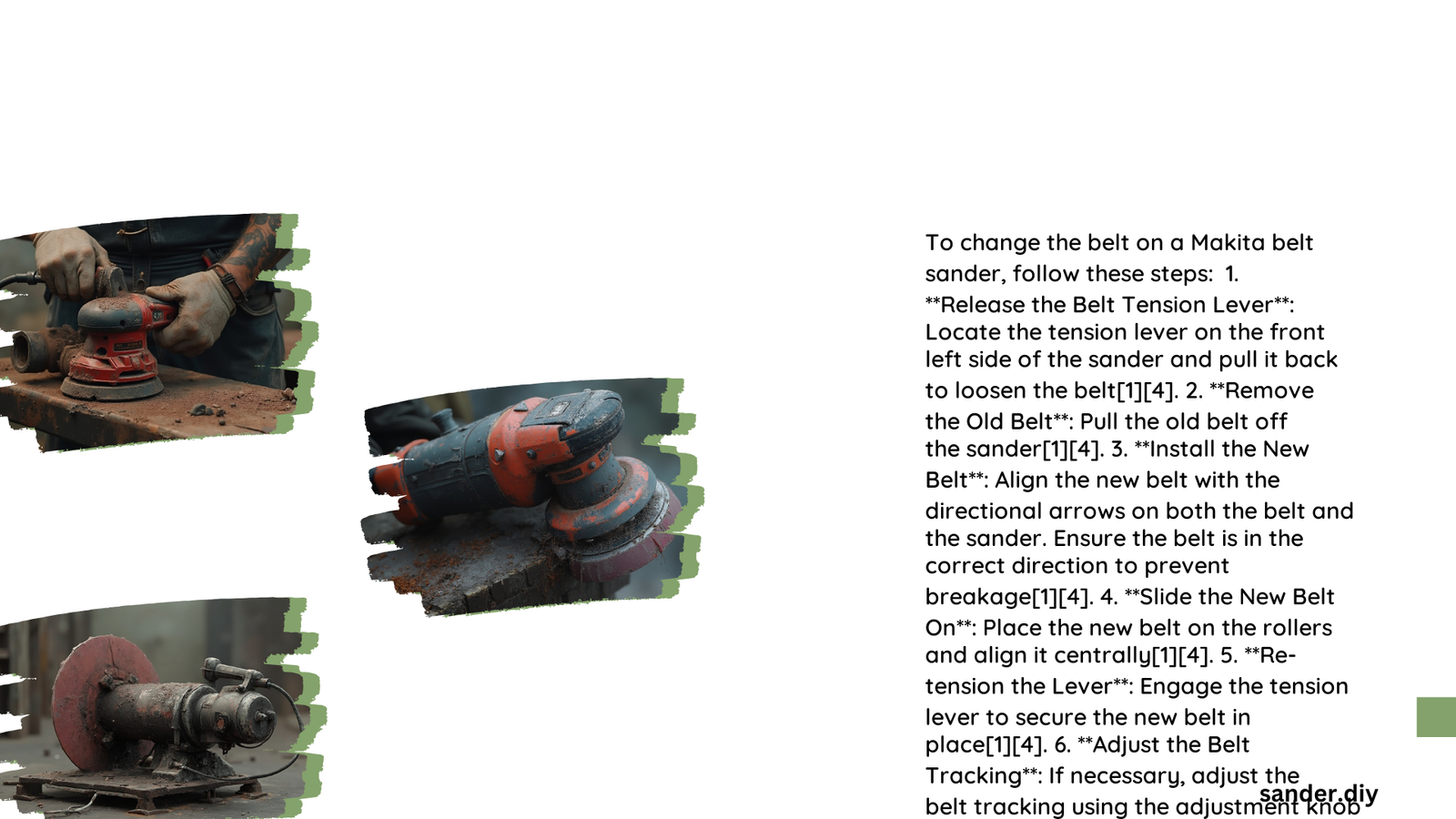Changing the belt on a Makita belt sander requires precision, understanding of the tool’s mechanics, and following specific steps to ensure optimal performance. Woodworkers and DIY enthusiasts must master this skill to maintain their sander’s efficiency, prevent unnecessary wear, and achieve smooth, professional-grade sanding results. This comprehensive guide will walk you through the entire process, from selecting the right belt to proper installation techniques.
What Tools Do You Need for Belt Replacement?
Before starting the belt replacement process, gather these essential tools:
| Tool | Purpose | Recommended Type |
|---|---|---|
| Replacement Belt | Primary Component | Makita-specific size |
| Work Gloves | Hand Protection | Cut-resistant |
| Clean Cloth | Surface Cleaning | Lint-free |
| Screwdriver | Potential Adjustments | Phillips head |
How to Prepare Your Makita Belt Sander?

Safety First
- Unplug the sander from electrical outlet
- Work in a clean, well-lit workspace
- Wear protective eyewear and gloves
Belt Inspection Checklist
- Check current belt for wear and damage
- Verify replacement belt dimensions
- Confirm rotation direction arrows
- Ensure belt is free from manufacturing defects
What Are the Step-by-Step Belt Replacement Techniques?
Belt Tension Release
- Locate tension lever on sander
- Pull lever backward to create slack
- Gently remove existing belt from rollers
New Belt Installation
- Align replacement belt with rotation arrows
- Carefully position belt around front and rear rollers
- Ensure even placement without twists
Tension Adjustment
- Push tension lever forward
- Apply moderate pressure
- Test belt alignment by rotating manually
What Common Mistakes Should You Avoid?
Critical Errors to Prevent:
– Using incorrect belt size
– Over-tightening the belt
– Misaligning rotation arrows
– Ignoring manufacturer specifications
How Often Should You Replace Sander Belts?
Replacement Frequency Factors
- Usage intensity
- Material being sanded
- Visible wear indicators
- Recommended maintenance schedule
Typical Replacement Intervals:
– Light use: Every 6-12 months
– Heavy use: Every 3-6 months
– Professional workshops: Monthly inspections
Pro Tips for Optimal Performance
Maintenance Recommendations
- Clean rollers after each belt change
- Store belts in cool, dry environment
- Purchase belts from authorized Makita dealers
- Keep spare belts in workshop
Troubleshooting Belt Alignment
- If belt tracks incorrectly, use tracking adjustment knob
- Slight left/right movements can center belt
- Consult user manual for model-specific instructions
What Are Potential Belt Replacement Challenges?
Advanced Troubleshooting
- Persistent tracking issues
- Unusual roller wear
- Inconsistent sanding performance
Solution Strategies:
1. Inspect roller condition
2. Check for mechanical misalignments
3. Contact Makita professional support
Cost Considerations
Belt Replacement Expenses
- Average belt cost: $15-$35
- Professional service: $50-$100
- DIY replacement: Minimal cost
Final Recommendations
Mastering Makita belt sander maintenance requires practice, attention to detail, and understanding your specific model’s requirements. Regular belt changes ensure consistent performance and extend your tool’s lifespan.
